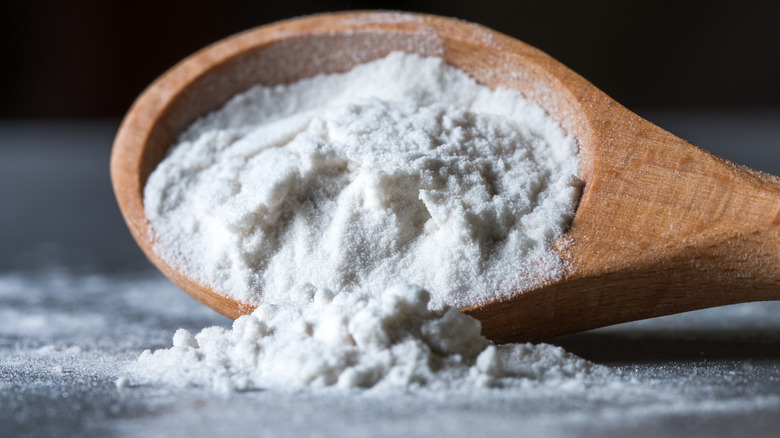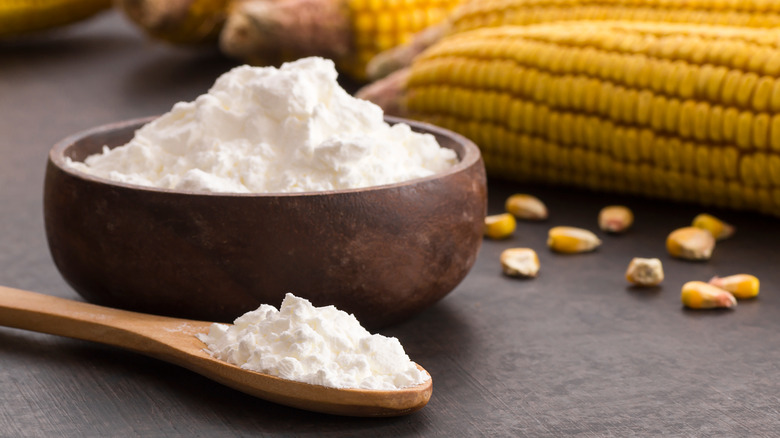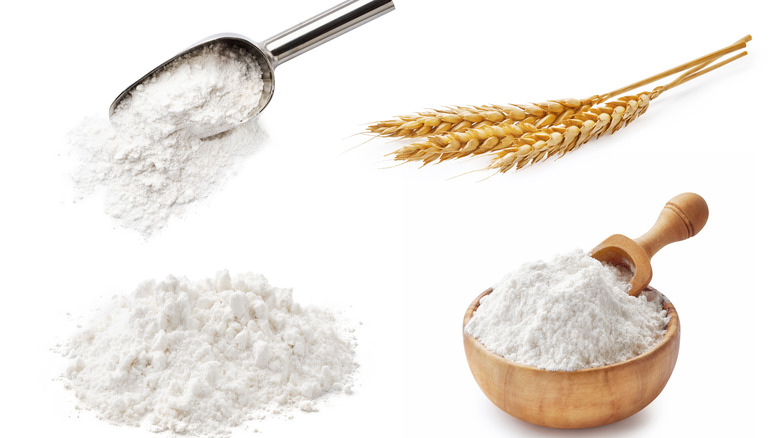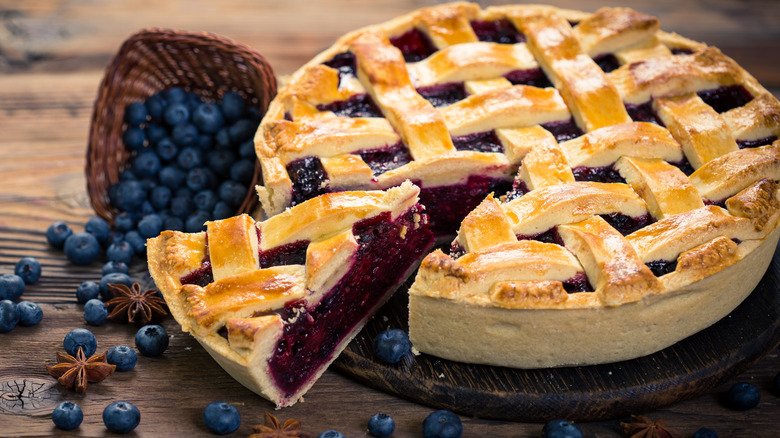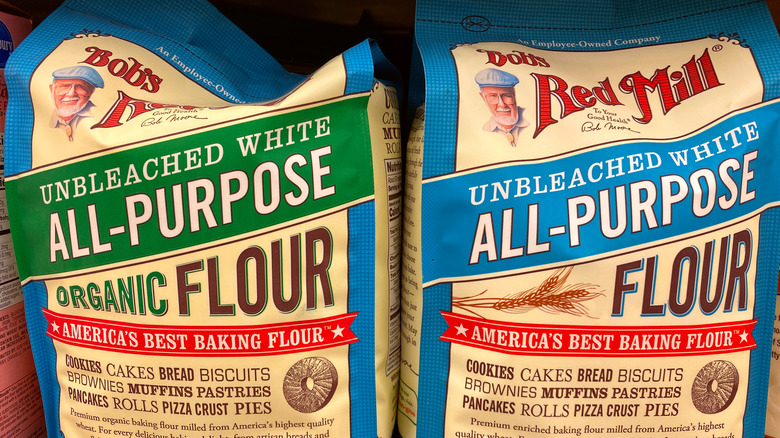What Is The Difference Between Arrowroot And Cornstarch?
Cooking up a delicious sauce or gravy or making a pie filling or custard often requires a little extra help when it comes to thickening. Starches, such as arrowroot, cornstarch, or flour, can be an easy way to turn a runny filling with a liquid consistency into the slightly more solidified, gel-like texture you desire. Although they all act as thickening agents, you'll want to decide on what to use based on what you're cooking or baking.
Not only are these options for thickening a dish and adding a nice texture, but cornstarch can also be a secret ingredient when it comes to keeping in moisture in baked goods, such as cookies, cakes, or bread. Oftentimes, these starches can be used interchangeably but you will want to know a few things in order to decide which is the best option for your recipe. One starch may be a better choice when it comes to whipping up delicious baked goods.
What are arrowroot and cornstarch?
Arrowroot is the name of a plant with one species called Maranta arundinacea, but it's also a type of starch made from the roots of tuber vegetables from the Maranta plant family. The tubers are dried and then ground into a fine, smooth white powder, according to The Spruce Eats. Arrowroot will create a glossy shine and a silky texture for most dishes or fruit-based desserts, Taste of Home reports. However, arrowroot does best when added at the very end of cooking since too much heat can make the starch break down and lose its ability to thicken (via The Spruce Eats).
Corn starch is derived from the endosperm of corn kernels that are finely ground. Since it's made from corn, it's naturally gluten-free. If you're cooking a high-temperature dish, you'll want to opt for cornstarch because it can take the heat (via Taste of Home). However, one downside to cornstarch is it doesn't freeze well so you´ll want to take this into consideration when making your dish or dessert.
Flour is another option to thicken sauces, gravies, or as a batter for frying foods. But corn starch has a few advantages over flour, such as when mixed in, it remains transparent while flour can add a cloudy opaqueness.
Do they taste different?
One of the great things about using arrowroot or cornstarch in recipes is they have a neutral flavor. Despite cornstarch being ground-up corn and arrowroot ground-up tubers, these powders don't taste like much. This is good news as you can use these two thickening agents without concern that they will alter the flavor of the dish you are making and you don't have to worry about figuring out how to disguise this additional ingredient. However, if you use flour you need to ensure it's well mixed and completely cooked to minimize any hint of flour, according to Science of Cooking.
Arrowroot and cornstarch are similar because they are both fine, white powders and both should be mixed with room temperature water to create a slurry before being added to a liquid or sauce to avoid clumping. This means that you can often substitute one for the other for sauces, gravies, and soups, but if you're using a lot of heat or preparing a non-dairy dessert, arrowroot may be the better choice.
Can you substitute arrowroot for cornstarch?
Cornstarch and arrowroot are better thickening agents and are considered to have double the power of flour. If you want to substitute flour for cornstarch the ratio is double the amount. The ratio is two to one, or two tablespoons flour to one tablespoon of water. Arrowroot and cornstarch have the same ratio of one to one. But if you prefer flour to arrowroot, you will also want to double up the amount of flour to water, or liquid, according to Taste of Home.
If you're making a fruit filling, jam, or jelly, arrowroot is preferred because it does well with acidic juices and offers a nice lustrous finishing touch. However, if you're making a dish or dessert that uses dairy, you're going to want to opt for cornstarch since dairy products — minus ice cream — can produce a slimy or gooey texture, according to The Spruce Eats.
Before you start cooking, it's important to know what your goals are to be able to choose the best thickening agent for your dish. Sometimes, it won't matter and you can use arrowroot, cornstarch, or flour for the meal you're making.
Is arrowroot or cornstarch more expensive?
When it comes to the price between flour, cornstarch, and arrowroot, there is definitely a difference in price. If you're making a decision based on cost alone, then you'll want to opt for flour since this is significantly less than the other two options and you're likely to already have it in the pantry.
Cornstarch comes in second with a box or bag with a price point around a few dollars and typically sold as a 16-ounce to 18-ounce box. But of the three options, arrowroot costs the most. An 18-ounce bag of cornstarch goes for $3.19, while a 16-ounce package of arrowroot is a bit more than double the cost at $6.49, according to Bob's Red Mill, though the brand and location will influence the price, too. Of course, it all depends on what you plan to make to really determine what starch is best for you.
